Over 210,000 evacuated as floodwaters rise across Punjab following India's water release
Evacuations carried out with help from Pakistan Army, Rangers, Rescue 1122, PDMA: NDMA chairman
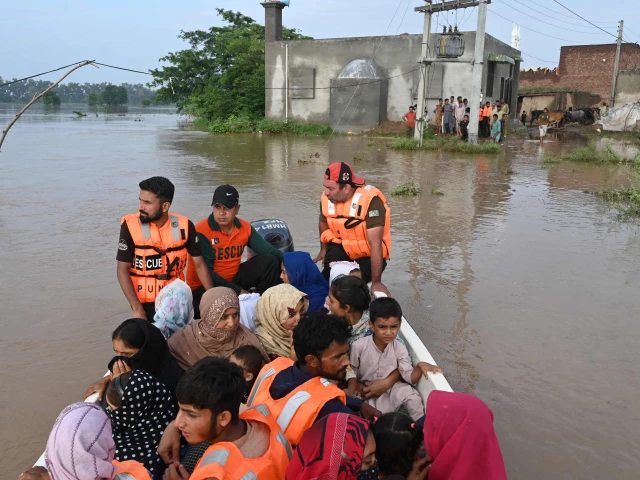
As floodwaters rise across Punjab following India's release of water into eastern rivers, the Pakistan Army has been deployed to assist in large-scale rescue and relief operations.
The National Disaster Management Authority (NDMA) has confirmed that over 210,000 people have been safely evacuated from vulnerable areas.
NDMA Chairman Lieutenant General Inam Haider Malik, addressing a press briefing on Wednesday, said that the evacuations have been carried out through coordinated efforts involving the Pakistan Army, Rangers, Rescue 1122, Provincial Disaster Management Authorities (PDMAs), and other civil agencies.
“All evacuees have been relocated to government-run relief camps where they are receiving food, medical care, and essential supplies,” he stated, adding that these facilities will remain functional until it is safe for families to return home.
Water levels are expected to rise significantly in the coming days, with Panjnad’s flow projected to reach 600,000–700,000 cusecs, prompting heightened monitoring at downstream points including Kotri and Guddu.
Continuous evacuation along the Sutlej River is ongoing, with priority given to vulnerable populations as directed by the Chief of Army Staff (COAS) Field Marshal Syed Asim Munir.
Authorities said neighbouring India had released water from upstream dams on its side of the border, further increasing the volume of water reaching Pakistan. The Foreign Office said New Delhi had given advanced notice through diplomatic channels ahead of opening the dam spillways.
Authorities blew up an embankment next to a monsoon-engorged dam as flooding submerged one of the world's holiest Sikh sites. Authorities carried out a controlled explosion of an embankment at Qadirabad dam on the Chenab River on Wednesday as the water levels rose.
"To save the structure, we have breached the right marginal embankment so that the flow of the water reduces," said Mazhar Hussain, the spokesperson for Punjab's disaster management agency. The Kartarpur temple, where the founder of the Sikh faith Guru Nanak died in 1539, was submerged by floodwater near the border with India.
🛑 #KARTARPUR UNDER #FLOOD: The situation in #Punjab has become extremely critical 🚨 as rivers have risen to dangerous flood levels 🌊. #Kartarpur has been completely submerged 😢, with #floodwaters covering houses, fields, and roads while advancing toward major towns 🏠🌾🚧.… pic.twitter.com/93Rl3jO0Jh
— PakWeather (@Pak_Weather) August 27, 2025
Visuals from the area showed Gurdwara Darbar Sahib in Narowal District completely submerged after the Ravi River overflowed its banks.
Five boats were dispatched to the sprawling site to rescue around 100 stranded individuals, as the PDMA confirmed that all Sikh pilgrims in Kartarpur had been safely evacuated.
The disaster management authority issued emergency alerts and advised those living near the Chenab, Ravi, and Sutlej rivers to "immediately move to safe locations".
"I urge the public to evacuate the floodplains along the Ravi River, as the water flow is the highest since 1988," provincial disaster chief Irfan Ali said. The flood surge "is expected to pass through Lahore tonight and tomorrow morning", he said of the Punjab capital.
Meanwhile, Prime Minister Shehbaz Sharif chaired an emergency meeting in Islamabad, where he directed the NDMA to strengthen early warning systems and take immediate action to prevent urban flooding in Lahore, Sialkot, and Gujrat.
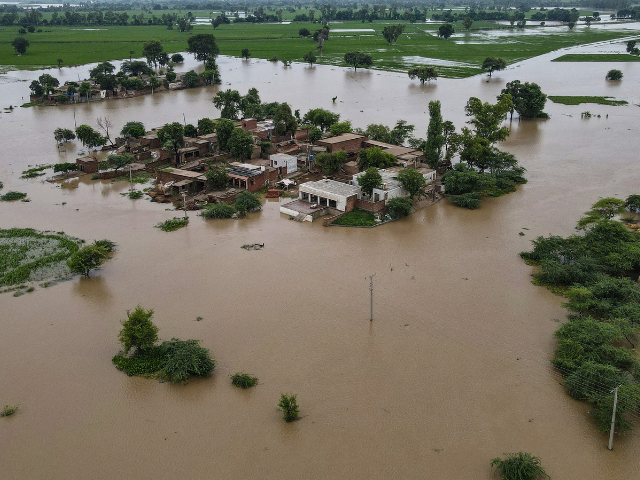
This aerial photograph shows partially submerged houses in the flood-affected area of Haqu Wala village in Pakistan's Kasur district on August 26, 2025. Photo: AFP
The premier reiterated the federal government’s full support to Punjab, as it had previously extended to Khyber-Pakhtunkhwa during recent flood events.
At the same briefing, Information Minister Attaullah Tarar reported significant water level surges in the Sutlej, Ravi, and Chenab Rivers, with the Khanki point exceeding 1,000,000 cusecs, now moving towards Qadirabad.
Tarar stressed that the government is determined to prevent future construction along riverbeds and is actively coordinating with local administrations for further evacuations, particularly in Qadirabad.
During the meeting, it was highlighted that high water discharge levels are being closely monitored at Head Marala, Khanki, Balloki, and Qadirabad, while pressure points on Ravi River at Shahdara and Sutlej at Sulemanki are also under scrutiny.
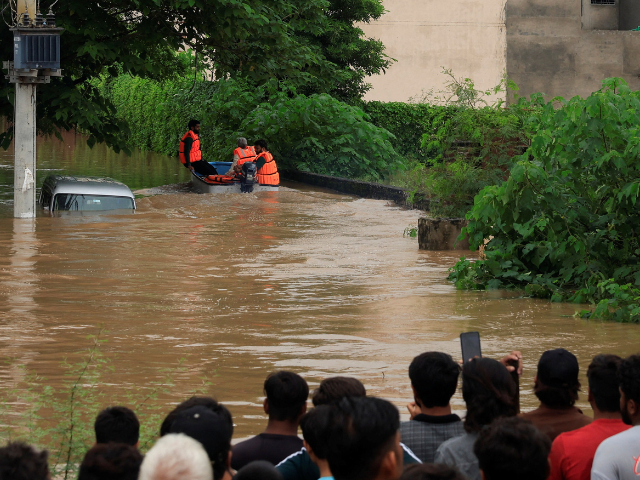
Volunteers from Rescue 1122 search for residents in a flooded area, following monsoon rains and rising water levels in Sialkot, Punjab province, Pakistan, August 27, 2025. Photo: Reuters
Officials, including Federal Ministers Ahsan Iqbal, Musadik Malik, Attaullah Tarar, and Ahad Khan Cheema, were present at the high-level briefing alongside senior NDMA and government representatives.
Earlier, briefing the media, Inter-Services Public Relations (ISPR) Director General Lieutenant General Ahmed Sharif Chaudhry said that three rivers in Pakistan were experiencing flooding, with the army carrying out rescue operations in affected areas.
He was flanked by Information Minister Attaullah Tarar and NDMA Chairman Lieutenant General Inam Haider Malik. The DG ISPR said that troops and officers were standing with the nation in this difficult time.
The Pakistan Army has been deployed in eight districts—including Lahore, Kasur, Sialkot, Faisalabad, Narowal, Okara, Sargodha, and Hafizabad—to support local administrations. According to the Punjab Home Department, Army Aviation and additional resources are being deployed to the worst-hit areas.
Flooding has devastated large swathes of Kasur, Okara, Pakpattan, Vehari, Bahawalnagar, and Bahawalpur, affecting over 125 villages collectively. Relief materials, including 130 boats, 1,300 life jackets, 6 ambulance bikes, and 245 life rings, have been dispatched.
Moreover, the NDMA has also issued early warnings for a new spell of rainfall expected between August 29 and September 9, particularly targeting catchment areas already grappling with flooding.
کرتار پور سے زائرین کے انخلاء کے آپریشن کی میں نے خود نگرانی کی اور لمحہ بہ لمحہ صورتحال پر نظر رکھی۔ الحمدللہ تمام محصور زائرین کو بحفاظت نکالنے کا عمل شروع ہو چکا ہے اور انتظامیہ پوری تندہی سے اپنی ذمہ داریاں ادا کر رہی ہے۔ ہمارا اولین مقصد یہ ہے کہ ہر زائر کو مکمل تحفظ اور… pic.twitter.com/vxNEMdZs46
— Ahsan Iqbal (@betterpakistan) August 27, 2025
River levels remain high
Water levels in Pakistan’s major rivers and reservoirs remain critically high, with inflows surpassing 1.2 million cusecs and floodwaters continue to move downstream into Punjab. Authorities reported both large-scale evacuations and extensive rescue efforts as concerns mounted over the safety of communities along the Chenab, Ravi and Sutlej rivers.
According to the Water and Power Development Authority (WAPDA), the Indus River at Tarbela recorded an inflow of 240,000 cusecs and outflow of 245,400 cusecs.
ہنگامی اطلاع:خانکی ہیڈورکس پر شدید سیلابی صورتحال:
— NDMA PAKISTAN (@ndmapk) August 27, 2025
اپڈیٹ: 27 اگست، دوپہر 12 بجے
دریائے چناب میں خانکی کے مقام پر پانی کا بہاؤ 10 لاکھ کیوسک سے تجاوز،جبکہ ہیڈ ورکس کی ڈیزائن کردہ گنجائش 8 لاکھ کیوسک۔ شدید سیلابی ریلے کے باعث ہیڈ ورکس کے ہائیڈرولک ڈھانچے کو نقصان پہنچ سکتا۔ pic.twitter.com/JhX8BS9D2j
At Mangla on the Jhelum, inflow was 34,000 cusecs and outflow 8,000 cusecs. Chashma saw inflows of 326,600 cusecs and outflows of 329,000 cusecs, while at Head Marala on the Chenab, inflows reached 107,500 cusecs against 89,500 cusecs outflow.
In Nowshera, the Kabul River registered 39,400 cusecs both in inflow and outflow.
Reservoirs remained under pressure, with Tarbela at 1,549 feet holding 5.67 million acre-feet (MAF), Mangla at 1,220.95 feet also holding 5.67 MAF, and Chashma at 647 feet with 0.21 MAF.
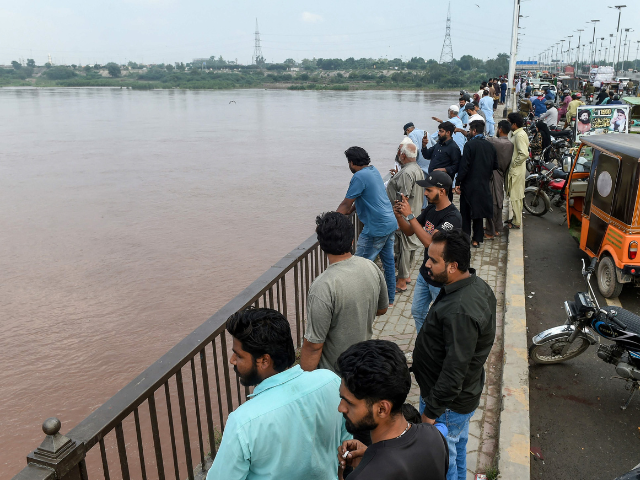
Commuters watch the Ravi River from a bridge as the government announced a flood alert in the riverside areas of Punjab province, in Lahore on August 27, 2025. Photo: AFP
The combined usable storage across Tarbela, Mangla and Chashma stood at 11.55 MAF. Since 1 April, however, 11.8 MAF of water – estimated at US$11 billion – has flowed into the sea.
The Indus carried the largest volume to the sea, with flood-like conditions reported from Chashma downstream to Kotri. At Sukkur, discharge reached 449,000 cusecs; at Guddu, 312,000 cusecs; at Taunsa, 345,000 cusecs; and at Kalabagh, 271,000 cusecs.
On the Chenab, flow at Head Marala touched 902,000 cusecs, while no dam exists to store its waters.
WITH ADDITIONAL INPUT FROM AGENCIES




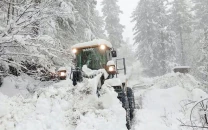
















COMMENTS
Comments are moderated and generally will be posted if they are on-topic and not abusive.
For more information, please see our Comments FAQ